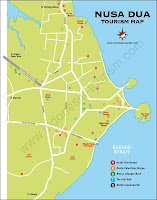Mola-mola (sunfish)
Toyapakeh has a stretch of reefs, and in the southern part of the bay there is a similar area of rugged bommies, rich with color and fish. Big schools of fish, sea turtles, and occasionally Mola mola (sunfish) are highlight of Toyapakeh diving. Toyapakeh is special for its pillars of coral.
Nusa Penida covers a wide area of diving locations. They are Penida Bay, Batu Lumbung (Manta Point), Batu Meling, Batu Abah, Toyapakeh and Malibu Point. The flow through the Lombok Strait is, overall, south-tending, although the strength and direction of the tidal streams are influenced by the monsoon seasons.
During the southeast monsoons, the tidal flow tends south; during the northeast monsoons, the tidal flow tends north. In the area of the strait north of Nusa Penida, the pattern is relatively simple, with a flow, at peaktide, of about three-and-one-half knots. Tidal streams in Badung Strait are semi-diurnal, but the character of the stream is very complicated because its direction runs obliquely to the general south to north direction of Lombok Strait, and the channel has a curved shape.
Malibu Point is a diving site with gray reefs, reef white tips, silver-tips and numerous sharks. While Penida Bay is another anchorage, and the rocky islands have an interesting forms; something like an old resting elephant. The bay is vulnerable to swell, creating-up-and-down-currents. Then, Manta Point is a limestone rock off Pandan cafe.
The swell is relatively strong. It's realy diving point for tourism.

No comments:
Post a Comment